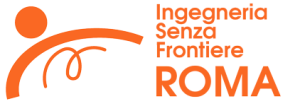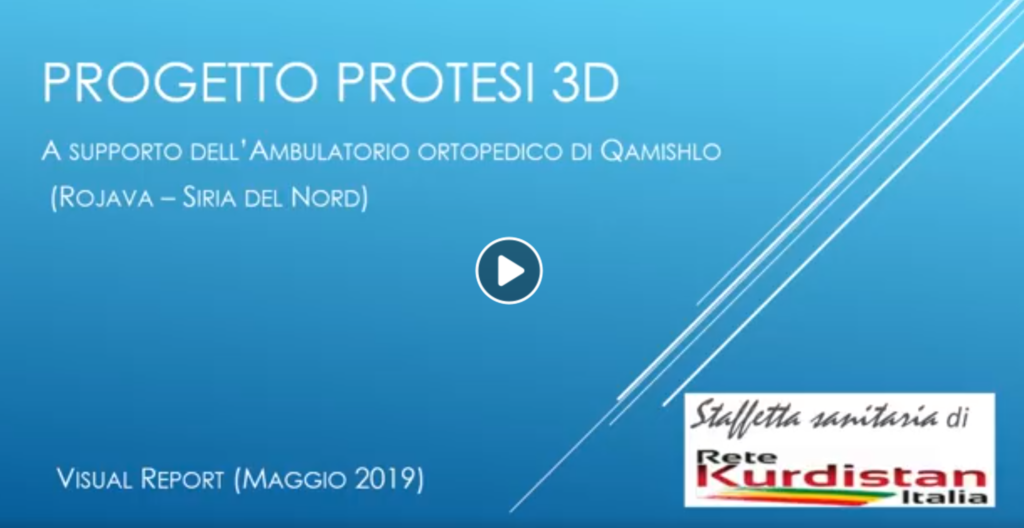Sintesi del progetto Rojava
Vi scriviamo questo breve post per raccontarvi lo stato attuale del progetto. Sebbene l’emergenza attuale in Italia non ci consenta di procedere con il lavoro sperimentale, il gruppo di lavoro continua a riunirsi in videoconferenza ogni giovedì, e le cose da fare sono sempre tante!
Stiamo iniziando la modellazione di una protesi superiore fissa femminile, studiando come simulare prove di carico sui dispositivi protesici e compilando protocolli di stampa per gli oggetti realizzati. Inoltre, abbiamo preparato un resoconto dell’attività svolta fino ad oggi, con descrizione delle metodologie di lavoro e dei prototipi realizzati (ed annessi successi e criticità), che condivideremo in dettaglio con voi in una serie di post nei prossimi giorni.
Nel frattempo, ecco un visual report del lavoro svolto lo scorso anno, a partire dalla formazione del gruppo di lavoro, fino alla realizzazione dei primi modelli e la consegna presso il laboratorio di Qamişlo.
[English]
OUR 3D PRINTED VISORS: SOLIDARITY AND PARTICIPATORY TECHNOLOGY
It is true, it took us some time to join the solidarity network of makers who have been producing valves, masks and other equipment components for a few weeks; in return, when this post is not an announcement about our plans, but to report on what we have already done and intend to do in the future.
Our “mission” is to continue to produce and test prostheses for Rojava, but the laboratory is not currently accessible. Because of this, during our periodic online meetings we began to discuss what other makers have started doing. All the 3D mask models that came out were always missing something that was difficult to find (such as TNT or non-woven fabric with filtering capacity) or were difficult to assemble. The question also remained of how best to link production with the demand of more critical situations.
Things moved faster after the Engineering Department made a public call asking who in Rome has a 3D printer to produce respirator components. The boys and girls of ISF have joined, on behalf of the 3D Prosthesis Group, this call and we await details on the fabrication of “Charlotte” and “Dave”, the two valves needed to adapt a snorkel mask to respirators.
In the meantime, another member of the group contacted a group of makers who coordinate the production of various objects for hospitals and healthcare facilities.
The printer was transferred to a new location, which is easier to access in this period of limited movement. For this we thank the CoTa association, which facilitated this movement as well as our access to the printer during the lockdown.
The first request to which we’re responding is the production of masks for the Gemelli Hospital in Rome. 70 masks, divided between different makers of Rome and nearby, are being produced.
The makers sent us the STL (the model to be printed) and the parameters to be entered in the open source software that controls the printer.
As usual, the first prints aren’t very good because the printed layers aren’t compact. This was expected, and the parameters are being refined. In the meantime, we discovered that the glass that covers the printer bed is not 100% flat, but has a height difference in the central part of a few millimeters. Unfortunately this is enough to prevent perfect adhesion to the plate of the first printed layers.
How do we fix this when the glassworks are closed? We are pretty lucky! A glassmaker in the neighborhood (a shop in via Dulceri 86) opened for us and not only cut the glass to the correct thickness, but refused to accept payment upon learning its purpose. Thank you!
We resumed printing and finally the proofs are good. We print three at a time, which takes six hours. We make them in green and white and we also found the 0.25mm PVC to make the front cover.
Everything was going smoothly, perhaps too much, when the unexpected happened: a gentleman who claimed to be a police inspector saw us enter the cellar of the building where the printer is located and asked if we have authorization. To the response that we have the request from a hospital, the assignment of an association, and the self-certification, he changed the subject and said that we cannot print in the cellar. Of course, he refused to show any ID, after we tell him that we would write to his commissioner to report his behavior. The neighbors got involved and we eventually installed the printer.
We finished the prints, and we now have 10 frameworks in total ready for covers to be applied. The last steps will be the sanitization of the masks (with the use of a water/bleach solution) and their packaging in an envelope to ensure their integrity.
We’ve now finished this task, our first to do with the current pandemic. Now we move onto out next, printing visors for Tor Vergata Hospital.
The printing of the Charlotte and Dave mask adaptors will wait until we have full details on their fabrication.


